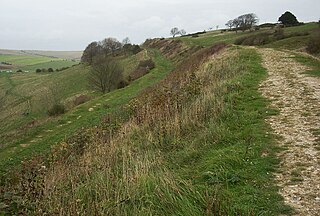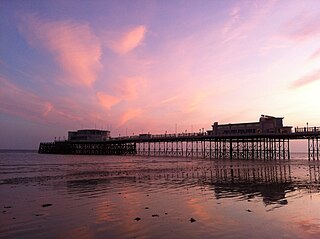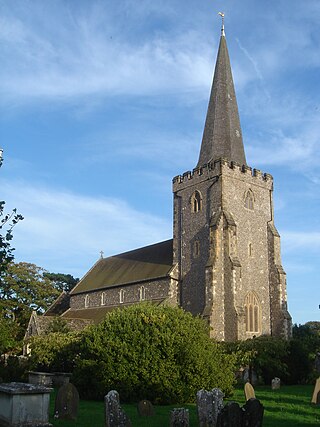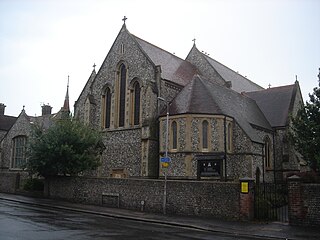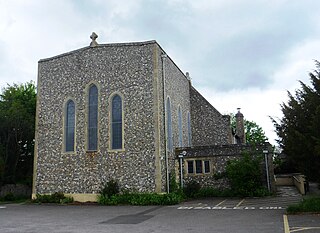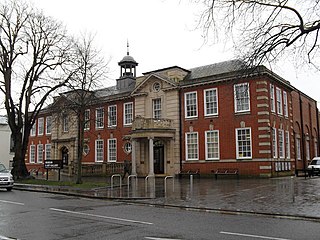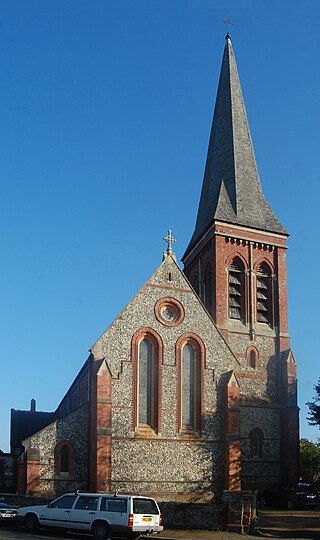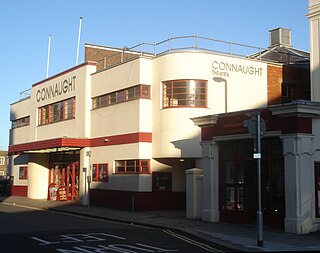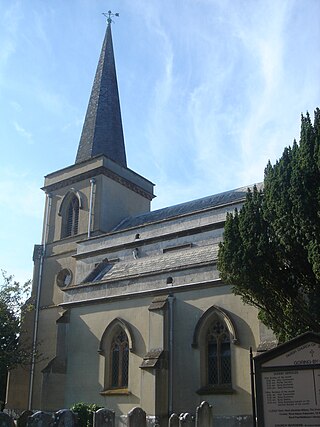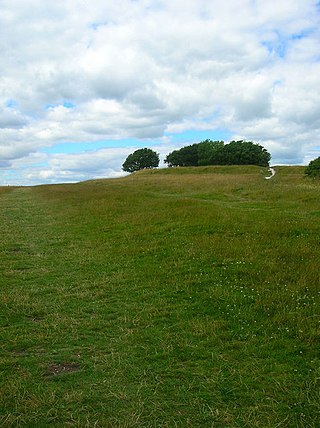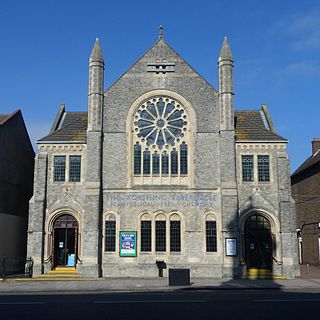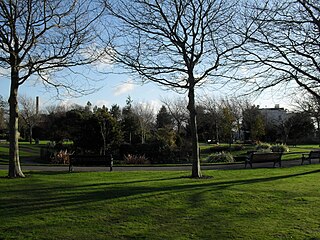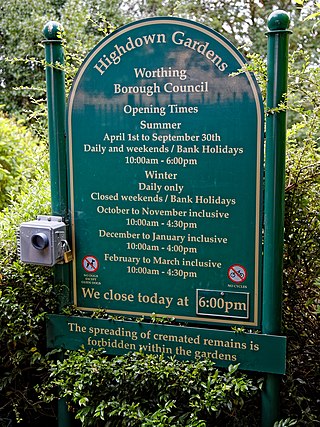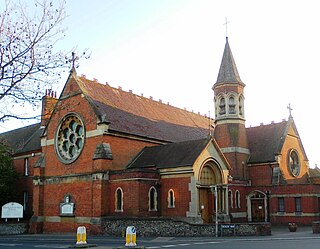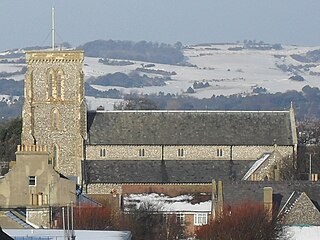15 Sights in Worthing, United Kingdom (with Map and Images)
Legend
Welcome to your journey through the most beautiful sights in Worthing, United Kingdom! Whether you want to discover the city's historical treasures or experience its modern highlights, you'll find everything your heart desires here. Be inspired by our selection and plan your unforgettable adventure in Worthing. Dive into the diversity of this fascinating city and discover everything it has to offer.
Sightseeing Tours in Worthing1. Cissbury Ring
Cissbury Ring is an 84.2-hectare (208-acre) biological Site of Special Scientific Interest north of Worthing in West Sussex. It is owned by the National Trust and is designated a Scheduled monument for its Neolithic flint mine and Iron Age hillfort.
2. Worthing Pier
Worthing Pier is a public pleasure pier in Worthing, West Sussex, England. Designed by Sir Robert Rawlinson, it was opened on 12 April 1862 and remains open to the public. The pier originally was a simple promenade deck 960 ft (290 m) long and 15 ft (4.6 m) wide. In 1888 the pier was upgraded with the width increased to 30 ft (9.1 m) and the pier head increased to 105 ft (32 m) for a 650-seat pavilion to be built. It is a Grade II listed building structure.
3. St Andrew
St Andrew's Church is the Church of England parish church of Tarring, West Sussex, England. Founded in the 11th century in a then rural parish which had earlier been granted to the Archbishop of Canterbury, the church remained a peculier of Canterbury for many centuries thereafter. It served nearby parishes when their churches fell into disrepair, John Selden was baptised here, and the church became a base for smuggling. The present building is mostly 13th-century, and its tall spire is a landmark in the area. The church is a Grade II* Listed Building.
4. St Andrew the Apostle
St Andrew the Apostle is an Anglican church in Worthing, West Sussex, England. Built between 1885 and 1886 in the Early English Gothic style by Sir Arthur Blomfield, "one of the last great Gothic revivalists", the church was embroiled in controversy as soon as it was founded. During a period of religious unrest in the town, theological tensions within Anglicanism between High church Anglo-Catholics and Low church Anglicans were inflamed by what the latter group saw as the church's "idolatrous" Roman Catholic-style fittings—in particular, a statue of the Virgin Mary which was seized upon by opponents as an example of a reversion to Catholic-style worship in the Church of England. The "Worthing Madonna" dispute delayed the consecration of the church by several years. English Heritage has listed the building at Grade C for its architectural and historical importance, and the adjacent vestry and vicarage are listed separately at Grade II.
5. St Symphorian's
St Symphorian's Church is an Anglican church in the Durrington area of the borough of Worthing, one of seven local government districts in the English county of West Sussex. The original 13th-century chapelry declined and fell into ruins in the 17th century, partly due to damage caused by the English Civil War. Anglican worship was re-established in a tin tabernacle in 1890 as the former village grew into a suburb of Worthing, and during World War I a permanent church was built. It was extended during World War II. English Heritage has listed the building at Grade II for its architectural and historical importance.
6. Worthing Museum and Art Gallery
Worthing Museum and Art Gallery is in the centre of Worthing near the grade II* listed St Paul's. The building, which celebrated its centenary in 2008, was originally designed to house the town's library as well as the museum, the library section being funded by Andrew Carnegie. It is the largest museum in West Sussex.
7. St Botolph
St Botolph's Church is an Anglican church in the Heene area of the borough of Worthing, one of seven local government districts in the English county of West Sussex. It had 11th-century origins as a chapelry within the parish of West Tarring, but declined and fell into disuse by the 18th century. Neighbouring Worthing's rapid development as a seaside resort in the 19th century encouraged residential growth around the ancient village of Heene, and a new church with the same dedication was built to serve both Heene and the high-class planned estate of West Worthing. Edmund Scott's Early English Gothic-style church stands next to the fragmentary ruins of the old church, which are listed separately at Grade II.
8. The Connaught
The Connaught Theatre is a Streamline Moderne-style theatre and cinema in the centre of Worthing, in West Sussex, England. Built as the Picturedrome cinema in 1914, the venue was extended in 1935 and became the new home of the Connaught Theatre. The theatre houses touring West End theatre productions, musicals, thrillers, dramas and children's productions. Since 1987, it has been a dual use cinema/theatre with two screens, and has a seating capacity of 512. When it opened, it was a rare example of a conversion from a cinema to a theatre: the reverse was much more common in 1930s Britain, when many theatres became cinemas. The Connaught Studio, next door, was the venue for the short-lived The End of the Pier International Film Festival.
9. St Mary
St Mary's Church is an Anglican church in the Goring-by-Sea area of the Borough of Worthing, one of seven local government districts in the English county of West Sussex. The late Norman parish church of the ancient village of Goring retains some architectural elements from that period, but Decimus Burton's comprehensive restoration of 1837 has given the church its present Gothic Revival exterior appearance. German artist Hans Feibusch, who worked extensively in the Diocese of Chichester, provided a mural in 1954: it is considered impressive, but caused controversy at the time. English Heritage has listed the church at Grade II* for its architectural and historical importance.
10. Highdown Hill
Highdown Hill is a hill in the South Downs, with a height of 81 metres (266 ft). The summit of the hill and its western slopes lie in the parish of Ferring in the Arun district, while its eastern slopes lie in the borough of Worthing. It is a popular spot for picnickers, dog-walkers and horse riders. It overlooks Littlehampton, Angmering, Ferring and Worthing with views as far east as the Seven Sisters and west to the Isle of Wight.
11. Worthing Tabernacle
Worthing Tabernacle is an independent Evangelical Christian church in the town and borough of Worthing, one of seven local government districts in the English county of West Sussex. The present building, with its distinctive pale stone exterior and large rose window, dates from 1908, but the church was founded in 1895 in a chapel built much earlier in the 19th century during a period when the new seaside resort's population was growing rapidly. In its present form, the church is affiliated with the Fellowship of Independent Evangelical Churches. English Heritage has listed the building at Grade II for its architectural and historical importance.
12. Beach House Park
Beach House Park is a formal garden in Worthing, a town and local government district in West Sussex, England. Opened by Worthing Borough Council in 1924, the 9.57-acre (3.87 ha) park has formal lawns and flowerbeds, bowling greens of international standard, and a war memorial commemorating war pigeons. A café in the grounds was destroyed by fire in 2009.
13. Highdown Gardens
Highdown Gardens are gardens on the western edge of the town of Worthing, close to the village of Ferring and the National Trust archaeological site Highdown Hill, in West Sussex, England. Overlooking the sea from the South Downs, they contain a collection of rare plants and trees, collectively a national collection. The gardens are owned and maintained by Worthing Borough Council with free admission.
14. St Mary of the Angels
The Church of St Mary of the Angels, Worthing, is in Worthing, West Sussex, England. It is a Grade II listed building and the earliest of the four Roman Catholic churches in Worthing. It is an active Roman Catholic parish church in the diocese of Arundel & Brighton and the Worthing deanery.
15. Christ Church
Christ Church and its burial grounds in Worthing, England, were consecrated in 1843 by the Bishop of Chichester, Ashurst Turner Gilbert, to meet the need for church accommodation for the poor. Built by subscription between 1840 and 1843, the Church was initially regarded as a chapel of ease to St Mary's Church in Broadwater. The chapel of ease was upgraded to the status of church with its own parish in 1855.
Share
How likely are you to recommend us?
Disclaimer Please be aware of your surroundings and do not enter private property. We are not liable for any damages that occur during the tours.
